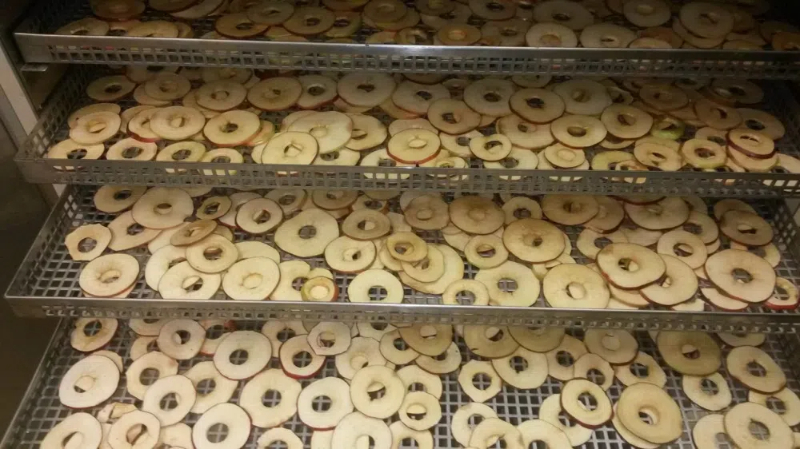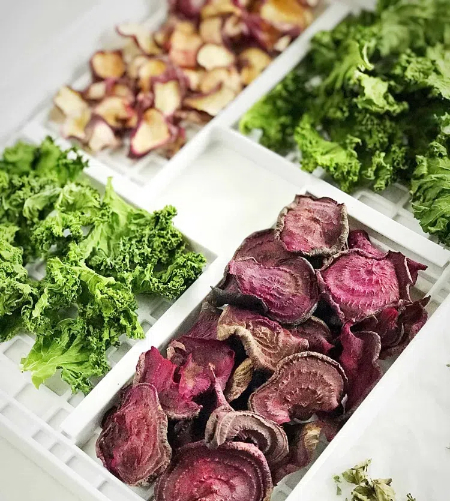
Content Menu
● Introduction to Food Drying Machines
>> Types of Food Drying Machines
● Installation of Room Type Drying Machines
● Applications of Room Type Drying Machines
● Advantages of Room Type Drying Machines
● Customization and Maintenance
>> Tips for Customizing Room Type Drying Machines
● Case Studies: Successful Applications
● Conclusion
● FAQs
>> 1. What are the main types of food drying machines?
>> 2. How do I ensure proper installation of a room type drying machine?
>> 3. What are the advantages of using room type drying machines?
>> 4. Can room type drying machines be customized for specific applications?
>> 5. How do I maintain the quality of dried food products?
● Citations:
In the realm of food processing, drying machines play a crucial role in preserving food quality and extending shelf life. As a Chinese manufacturer specializing in food drying machines, we provide OEM services to international brands, wholesalers, and producers. This article delves into the world of room type drying machines, focusing on their installation, types, and applications, while highlighting the ease of setup and operation.

Introduction to Food Drying Machines
Food drying machines are essential for removing moisture from food products, thereby preventing spoilage and maintaining nutritional value. These machines are widely used in the food industry for drying fruits, vegetables, meats, and seafood. The process involves controlled temperature and airflow to ensure uniform drying without compromising the food's texture or flavor.
Types of Food Drying Machines
1. Heat Pump Dryers: These machines use a heat pump system to efficiently dry food by circulating hot air and removing moisture. They are energy-efficient and suitable for drying a variety of products, including fruits, vegetables, and seafood.
2. Multi-Layer Mesh Belt Dryers: These dryers utilize a continuous belt system, allowing for large-scale production. They are ideal for drying fruits and vegetables due to their ability to maintain consistent airflow and temperature.
3. Tray Dryers: These are batch dryers where food is placed on trays in a drying chamber. Tray dryers are versatile and can be used for drying grains, nuts, and other food items.
4. Freeze Dryers: Although not typically classified as room type dryers, freeze dryers are worth mentioning. They work by freezing food and then reducing the surrounding pressure to allow frozen water to sublimate (change directly from solid to gas) without going through the liquid phase. This method preserves the food's structure and nutrients.
Installation of Room Type Drying Machines
Installing room type drying machines is relatively straightforward and can be done with minimal technical expertise. Here's a step-by-step guide:
1. Site Preparation: Ensure the installation area is clean, dry, and well-ventilated. The machine should be placed on a level surface to prevent uneven airflow.
2. Unpacking and Assembly: Carefully unpack the machine and assemble any components according to the manufacturer's instructions. This may include attaching fans, installing electrical components, or setting up the drying chamber.
3. Electrical Connection: Connect the machine to a suitable power source. Ensure all electrical connections are secure and meet local safety standards.
4. Testing: Before loading food, perform a test run to ensure the machine is functioning correctly. Check for any leaks, unusual noises, or temperature inconsistencies.
Applications of Room Type Drying Machines
Room type drying machines are versatile and can be used in various applications:
- Fruits and Vegetables: These machines are ideal for drying sliced fruits and vegetables, preserving their nutritional value and flavor.
- Meat and Seafood: Suitable for drying meats and seafood, ensuring they remain fresh for longer periods.
- Herbs and Spices: Can be used to dry herbs and spices, maintaining their aroma and potency.
Advantages of Room Type Drying Machines
1. Energy Efficiency: Many modern room type dryers, especially heat pump dryers, are designed to be energy-efficient, reducing operational costs.
2. Easy Installation: These machines are generally easy to install and require minimal technical expertise.
3. Consistent Drying: They provide consistent drying results, ensuring that the final product maintains its quality and texture.
4. Versatility: Suitable for drying a wide range of food products.

Customization and Maintenance
Room type drying machines can often be customized to meet specific production needs. This includes adjusting the size of the drying chamber, modifying the airflow system, or integrating additional features such as temperature control systems. Regular maintenance is crucial to ensure optimal performance and longevity of the machine. This includes cleaning the drying chamber and fans, checking for any blockages in the airflow system, and performing routine electrical safety checks.
Tips for Customizing Room Type Drying Machines
- Size Adjustment: Depending on the scale of production, the drying chamber can be customized to accommodate larger or smaller batches.
- Airflow Modification: Adjusting the fan speed or adding additional vents can improve drying efficiency for specific products.
- Temperature Control: Implementing advanced temperature control systems allows for precise drying conditions tailored to different food types.
Case Studies: Successful Applications
Several companies have successfully integrated room type drying machines into their production lines, achieving significant improvements in product quality and cost savings. For instance, a fruit processing company in Europe used a customized heat pump dryer to dry large quantities of berries, resulting in a 30% reduction in energy costs compared to traditional drying methods.
Conclusion
Room type drying machines offer a convenient and efficient way to dry food products, making them an essential tool in the food processing industry. Their ease of installation and operation, combined with their versatility and energy efficiency, make them a preferred choice for many manufacturers. Whether you are a small-scale producer or a large industrial operation, these machines can be tailored to meet your specific needs.

FAQs
1. What are the main types of food drying machines?
- Heat Pump Dryers: Use a heat pump system for efficient drying.
- Multi-Layer Mesh Belt Dryers: Ideal for large-scale production with continuous airflow.
- Tray Dryers: Suitable for batch drying of various food items.
2. How do I ensure proper installation of a room type drying machine?
- Prepare a clean and well-ventilated site.
- Follow the manufacturer's instructions for assembly and electrical connections.
- Perform a test run before use.
3. What are the advantages of using room type drying machines?
- Energy Efficiency: Reduces operational costs.
- Easy Installation: Minimal technical expertise required.
- Consistent Drying: Ensures high-quality final products.
4. Can room type drying machines be customized for specific applications?
- Yes, many manufacturers offer customization options to meet specific production needs, including different sizes and configurations.
5. How do I maintain the quality of dried food products?
- Ensure consistent drying conditions.
- Store dried products in airtight containers to prevent moisture absorption.
- Monitor temperature and humidity levels during the drying process.
Citations:
[1] https://www.iqsdirectory.com/articles/dryer/types-of-dryers.html
[2] https://images.thdstatic.com/catalog/pdfImages/f8/f8cf5e62-1180-4299-bb17-7b205dfe4d52.pdf
[3] https://www.youtube.com/watch?v=iIuV3EkRFtU
[4] https://www.istockphoto.com/photos/food-dehydrator
[5] https://www.youtube.com/watch?v=oDbPbR0-N8w
[6] https://www.tcpel.com/industrial-food-dryer-the-ultimate-guide/
[7] https://www.fooddehydratorsales.com/products-detail-24694
[8] https://www.istockphoto.com/photos/food-dryer
[9] https://www.youtube.com/watch?v=5FIVW77HGbI
[10] https://www.bxdrymachine.com/food-drying-machine.html
[11] https://www.dehydratorsamerica.com/category/industrial-food-dehydrators
[12] https://cdn.commercev3.net/cdn.lemproducts.com/downloads/778.pdf
[13] https://www.everythingkitchens.com/media/manual/7100.pdf











